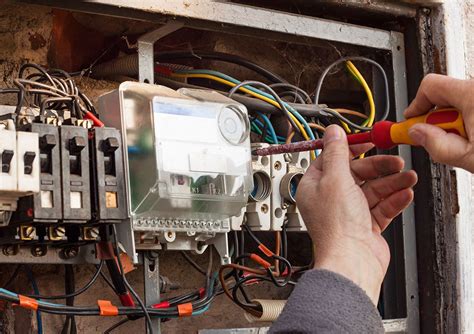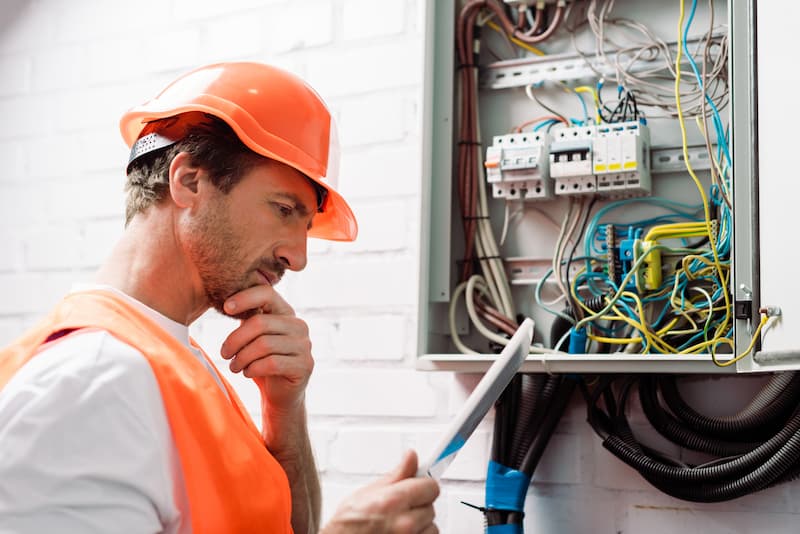Effective electrical system troubleshooting for seamless operations.
Effective electrical system troubleshooting for seamless operations.
Blog Article
Leading Tips for Effective Electrical System Troubleshooting
Fixing electric systems needs a methodical strategy, grounded in a thorough understanding of electrical concepts and security protocols. By acquainting oneself with circuit components, making use of vital devices, and sticking to an organized evaluation technique, specialists can properly recognize and deal with problems. The subtleties of efficient repairing prolong past simple technological knowledge; comprehending how to document searchings for and focus on safety can dramatically influence results. As we explore these crucial aspects better, it becomes clear that grasping this procedure is not just useful but vital for success in the area.
Understand the Basics
Comprehending the basics of electric systems is crucial for efficient troubleshooting, as a solid foundation allows specialists to diagnose and deal with issues more effectively. A detailed grasp of electrical principles, such as voltage, existing, resistance, and power, is essential in recognizing the source of troubles. Voltage is the electric prospective difference that drives existing via a circuit, while resistance opposes the circulation of current, affecting the overall functionality of the system.
Experience with circuit parts, consisting of resistors, capacitors, diodes, and switches over, is also extremely important. Each element plays a distinct function in circuit actions and can impact efficiency when malfunctioning. Furthermore, recognizing series and identical circuit setups is important, as these arrangements affect the distribution of voltage and present within the system.
Service technicians have to be aware of possible threats, such as shock and brief circuits, to implement risk-free troubleshooting methods. By understanding these fundamental concepts, specialists improve their capability to perform reliable diagnostics and fixings, ultimately leading to enhanced efficiency and integrity of electric systems (electrical system troubleshooting).
Gather Necessary Devices
Reliable troubleshooting of electric systems calls for the ideal collection of tools to diagnose and solve problems properly. A fully equipped service technician can significantly enhance performance and effectiveness in determining troubles. Vital tools consist of a multimeter, which determines voltage, present, and resistance, allowing for accurate evaluations of electric components. Clamp meters are also important for determining existing without detaching the circuit, guaranteeing safety and security and benefit.
In addition, protected hand tools such as screwdrivers, pliers, and cord strippers are crucial for securely controling electric links. It is additionally a good idea to have a circuit tester on hand to validate the presence of voltage in electrical outlets and wires. For even more complicated systems, a thermal imaging video camera can aid find overheating components, indicating potential failings.

Follow an Organized Method
Having gathered the ideal tools, the next action in troubleshooting electrical systems is to follow a systematic method. A methodical technique makes certain that technicians can identify faults efficiently and accurately, minimizing downtime and preventing unnecessary repairs.
Begin by examining the system's schematic representations and specs. Comprehending the design and operational parameters will certainly give context for diagnosing concerns. Next off, separate the problem area by making use of a procedure of elimination. This entails monitoring each component systematically, beginning from the source of power and working towards the lots.
Make use of screening equipment, such as multimeters and oscilloscopes, to collect objective data concerning voltage, existing, and resistance at different points within the system. This empirical proof will guide your troubleshooting initiatives and assist to confirm or get rid of prospective root causes of failure.
Additionally, think about environmental variables that may influence the system's efficiency, such as temperature changes or moisture access. An extensive inspection of electrical wiring, connections, and parts will make certain that all possibilities are made up.
Document Your Findings
Detailed documents is crucial in the repairing procedure of electric systems. This practice not just aids in recognizing the root cause of the problem however likewise offers as a referral for future troubleshooting efforts.

In addition, preserving a log of parts replaced or repairs executed is invaluable. This details supports supply monitoring and can assist evaluate the longevity and integrity of certain components.
Inevitably, the documents procedure should be comprehensive yet concise, enabling very easy access and review - electrical system troubleshooting. By focusing on in-depth paperwork, specialists can create a useful understanding base that not just aids in existing troubleshooting however also equips future maintenance initiatives, thereby improving total system dependability

Prioritize Precaution
Identifying the integral threats connected with electric systems is important for ensuring security throughout troubleshooting. Electrical shock, burns, and devices damage are just a few of the potential dangers that technicians deal with. Focusing on precaution is not just a legal responsibility yet also a moral imperative that safeguards both the specialist and the surrounding setting.
Prior to commencing any type of troubleshooting task, technicians ought to wear appropriate personal protective devices (PPE), consisting of protected gloves, safety and security glasses, and flame-resistant clothes. Making sure that the workplace is completely dry and free of clutter can dramatically reduce the risk of accidents. Additionally, it is vital to de-energize circuits prior to starting any type of job, my blog validating that they are not live with using a multimeter or voltage tester.
Establishing clear communication protocols with team members is additionally vital; this makes certain that every person understands prospective dangers and the condition of the electrical system being worked on. Having an emergency reaction plan in area can verify very useful in the occasion of an event. By prioritizing precaution, professionals can successfully my link reduce risks and cultivate a much safer office.
Final Thought
Efficient electrical system fixing relies on a comprehensive understanding of essential concepts and a systematic technique. By collecting essential devices, sticking to organized analysis methods, and meticulously recording searchings for, the fixing procedure ends up being more reliable and trustworthy. Prioritizing safety and security steps guarantees the well-being of visit site people entailed and the stability of the electric system. Executing these approaches will improve the troubleshooting experience, bring about quicker resolutions and improved functional efficiency in electrical systems.
Report this page